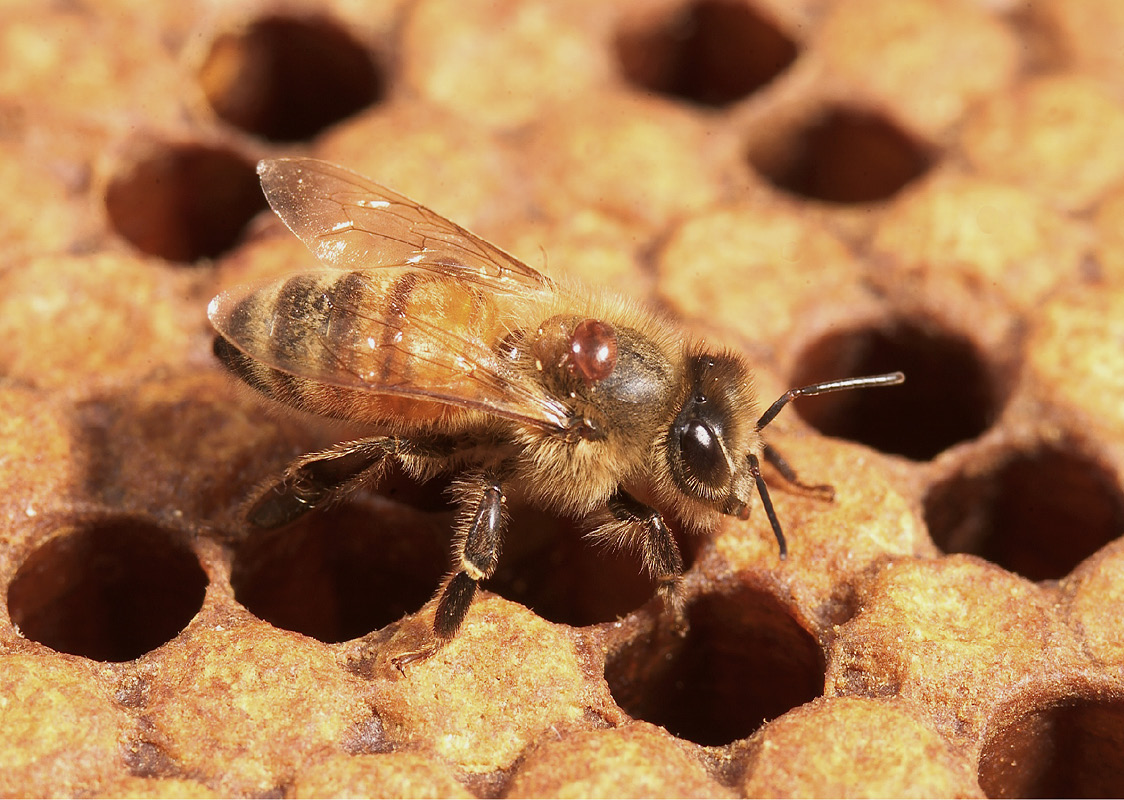The varroa mite is more than just a parasite. It’s a disease vector that weakens your bees’ immune systems and spreads viral infections throughout the hive. Understanding the most common diseases associated with varroa is a critical part of managing hive health.
If you’re seeing colony decline—even if mite levels seem low—it’s important to consider whether varroa-borne viruses are playing a role.
Here are some of the major diseases and viruses commonly linked to varroa infestations.
Deformed Wing Virus (DWV)
DWV is one of the most damaging and widely spread viruses in beekeeping. Infected bees often emerge with crumpled or underdeveloped wings and are unable to fly. These bees usually have a shortened lifespan and can’t contribute to foraging, leaving the colony weakened. DWV is most prevalent in colonies with high mite loads.
(Learn more about Deformed Wing Virus in the full post here.)
Acute Bee Paralysis Virus (ABPV)
ABPV causes sudden paralysis and death in adult bees. Infected bees may appear disoriented, tremble, and crawl near the hive entrance. This virus can wipe out foragers quickly and is commonly seen in colonies with uncontrolled varroa infestations.
(Detailed article on ABPV coming soon.)
Chronic Bee Paralysis Virus (CBPV)
CBPV has slower onset than ABPV but equally devastating results. Infected bees often look greasy or shiny and may be seen trembling or crawling on frames. Bees with CBPV are frequently ejected by guard bees, creating piles near the entrance.
(Full post on CBPV symptoms and signs coming soon.)
Israeli Acute Paralysis Virus (IAPV)
IAPV is another virus linked to sudden death and colony loss. Symptoms often overlap with other paralysis viruses, making it difficult to diagnose without testing. It’s found globally and believed to be a factor in some colony collapse events.
(More info on IAPV will be added here soon.)
Black Queen Cell Virus (BQCV)
BQCV affects queen larvae and pupae, turning developing queen cells dark and sunken. This virus is often overlooked until requeening fails repeatedly. While not exclusively caused by varroa, infected mites are believed to spread it across colonies.
(Learn how to identify BQCV in our upcoming queen health guide.)
Sacbrood Virus
This virus affects larvae, causing them to die before pupation. Infected brood appears stretched out and fluid-filled, like tiny water balloons inside capped cells. Sacbrood isn’t exclusive to varroa-infested colonies but becomes more common when colonies are stressed or immunocompromised.
(We’ll go deeper into sacbrood and how to manage it soon.)
Kashmir Bee Virus (KBV)
Less common but still dangerous, KBV causes rapid mortality in adult bees and is strongly associated with failing colonies. Like many varroa-vectored diseases, it often goes unnoticed until the hive is in serious decline.
(Article on KBV is coming soon.)
Final Thoughts
Varroa mites aren’t just a pest—they’re a delivery system for an entire suite of viral threats. Even when mite counts seem moderate, the presence of these viruses can quietly devastate your colony over time.
Routine monitoring, proactive treatment, and a solid Integrated Pest Management (IPM) strategy are your best defenses.
Now that you know what to look for and how serious varroa can be, check out this post on common treatment options to help protect your hive: Varroa Mite Treatment Options
